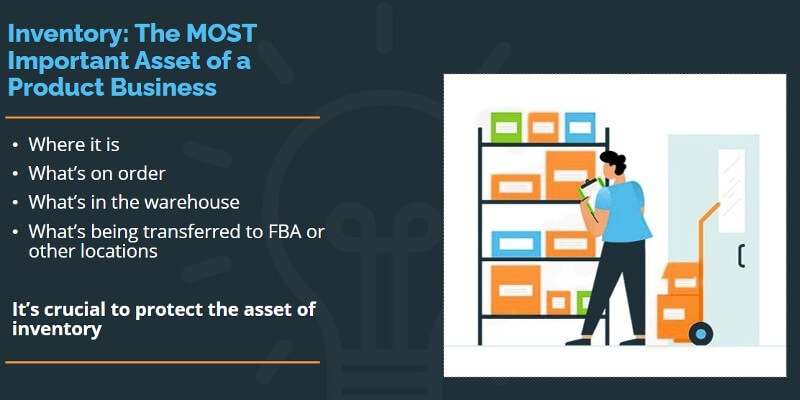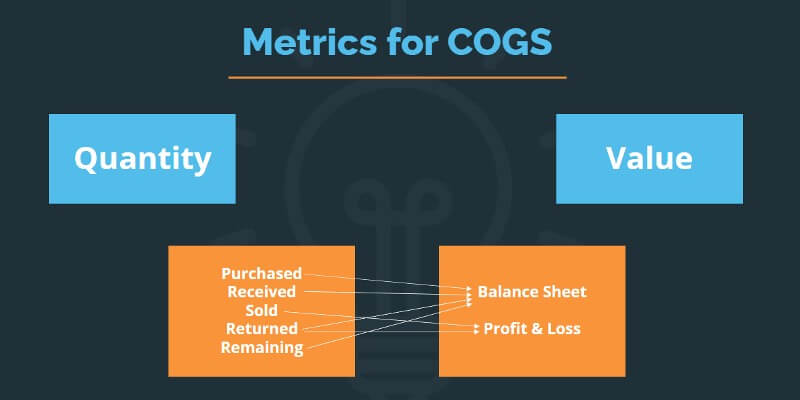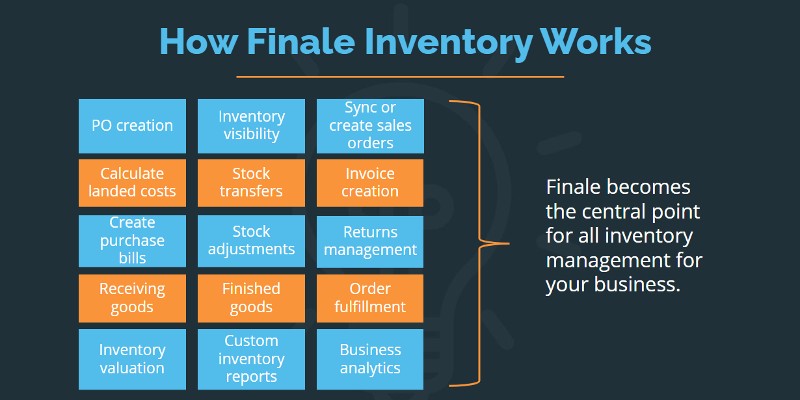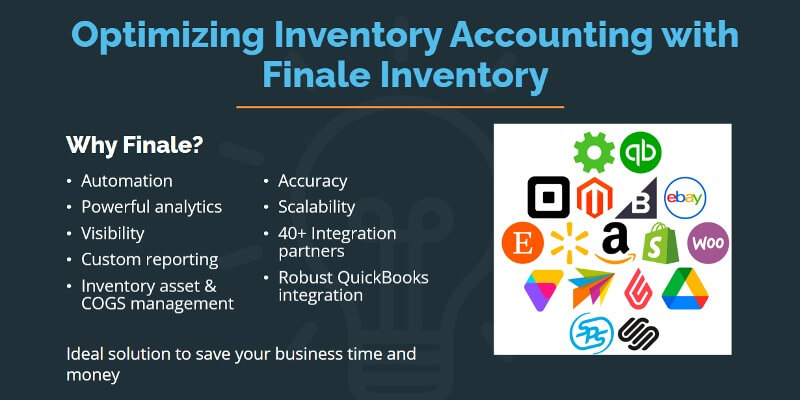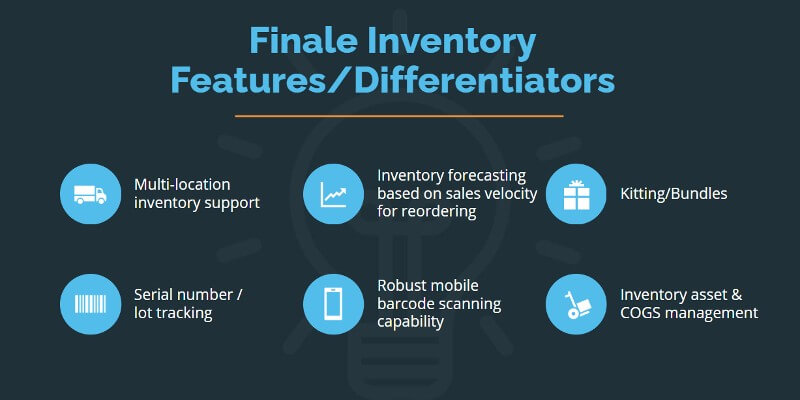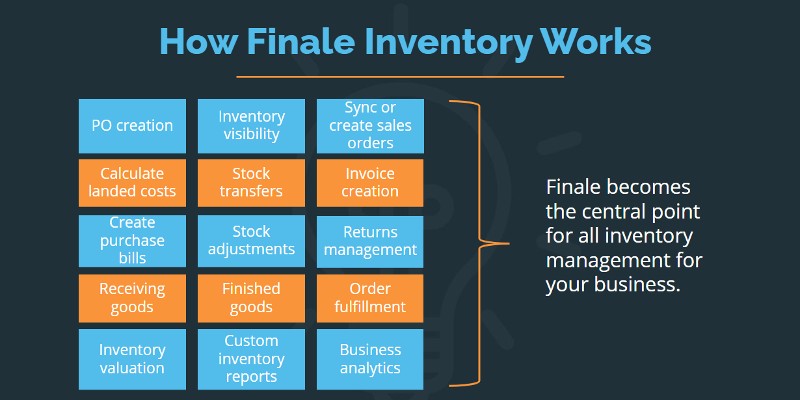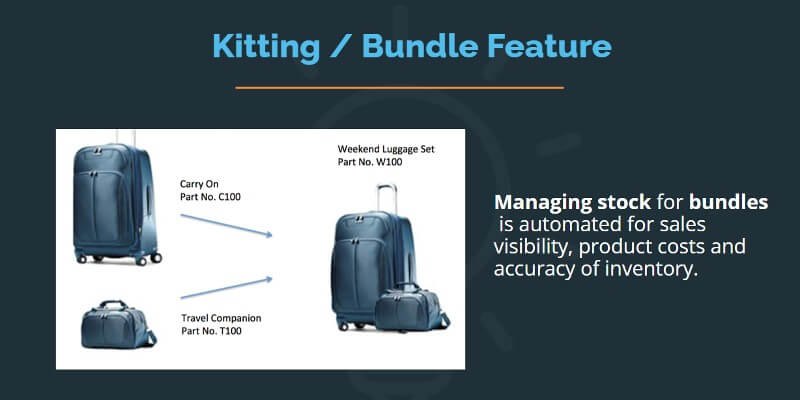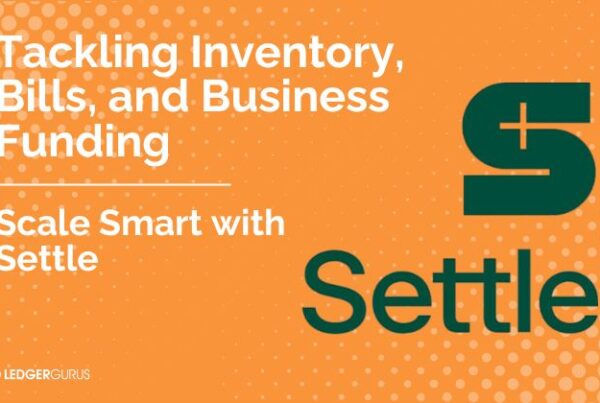Let’s face it – the words “inventory management system” are unlikely to get the heart racing or transform an otherwise dull afternoon. But take note, reader; they’re some of the most important words you’ll encounter as an online seller.
Many people forgo an IMS in favor of a more manual approach with spreadsheets and perhaps some QuickBooks use. While this can work reasonably well for a while, it becomes untenable once you’ve started to scale up.
In this article, we’ll discuss what inventory management software is and how it can transform both your operational and financial approaches. We’ll also talk about a specific IMS that may be of use to your business.
If you’d like to watch the full webinar this article was based on, along with a Finale demo and the question and answer session at the end, please watch Business Success Powered by Inventory Management.
Inventory – Your Most Important Asset
Not to state the obvious, but your inventory is your most important asset. Without it, sales are literally impossible. If you have even a shred of selling experience, you know how vital it is that you know where your stock is, what’s on order, what your warehouses are holding, and what’s being transferred through your system.
Without this critical information, it’s impossible to keep track of how your business is actually doing. It’s like constructing a building without the blueprints!
How Most Sellers Start Out
Truth be told, most sellers don’t start off using an inventory management system. They instead use spreadsheets in software like Google Sheets or Microsoft Excel. They track metrics like their COGS, inventory numbers, and projections by inputting data manually and cross referencing information as sales and orders are made. This is often used in conjunction with some form of accounting package to tide things over.
So, are you a fool if you’ve used this approach in the past? The answer is a resounding no. This is a good thing and you have to start somewhere. Here at LedgerGurus, we have definitely used a manual approach with our clients before, and indeed have resources on our site like this Inventory & COGS template to make the process easier for others.
It’s just that once you’re selling more than a dozen or so SKUs, you will start to encounter problems.
The Roadblocks This Can Cause
The hair-pulling and confusion that a manual approach can cause are not to be overlooked. We explore the reasons for this below.
COGS – The Golden Metric
Your “cost of goods sold” is probably the most important metric you’ll be using as a business. There are three primary reasons for this:
- It’s typically the biggest expense sellers face.
- It’s the ONLY accurate way to measure profits (if you don’t know your costs, you don’t know your profits).
- It helps you make better decisions for the future.
When it comes to sustainable growth as a seller, accurately tracking your COGS is huge.
The Issue With COGS and the “Spreadsheet Approach”
It can be disheartening when trying to get an accurate picture of your COGS. After all, the price you paid for your inventory isn’t the only thing you have to think about. We encourage our clients to also think in terms of the “cost of sales,” not just the cost of their inventory.
You need to consider any returns, the cost of holding your stock in warehouses, fulfillment revenue, ad spend, and any other cost associated with actually making a sale. Once you’re dealing with dozens of SKUs, bundles, and promotions, inputting all of this data into a spreadsheet that you can reliably use becomes… a real challenge.
The bottom line here is that COGS/ cost of sales as metrics are:
- Super important.
- Difficult to keep track of accurately.
The truth is that keeping track of all this info manually, while technically possible, is going to consume much more time and effort than it should. An inventory management tool can eliminate a huge chunk of this stress.
Accountability
Another significant roadblock you’ll face with a manual approach is keeping your fulfillment staff, bookkeepers, and yourself accountable. Let’s say that one of your suppliers informs you that a pallet of a specific, perishable, SKU has gone missing and can’t be accounted for. You’ve been pulling your hair out tracking 80+ SKUs and their various metrics manually.
How on earth are you supposed to know how much of that SKU you should have on hand, let alone where it should be across your network? You’re fairly confident in your data keeping, but don’t have enough info to challenge your staff’s assertion. One year later, the pallet is found and your perishable stock has, well, perished. That’s money thrown down the drain!
With an inventory management system, you’ll have a much more complete picture of how much stock you have, where it is, and where it’s going. In the scenario we just described (which actually happened to us in our own ecommerce company), you’d be able to hold your supplier accountable and tell them exactly where the stock should be.
Other Challenges
An exhaustive list of all the challenges you’ll face with a manual approach is beyond the scope of this article. Suffice it to say, however, that an IMS can be a huge help and clinging on to your spreadsheets can cause more harm than help, we promise.
Other challenges that the “manual method” can cause include:
- Scalability – tracking more than ~12 SKUs is very difficult.
- Forecasting – making accurate predictions is much harder if you’re cross-referencing multiple spreadsheets.
- Accuracy – there’s miles more room for human error.
- Communication – your spreadsheets might make sense to you, but will they make sense to your accountant? Will your warehouse workers know how to record a bundle sale accurately? The list goes on.
We’re not here to harp on a solely manual approach to inventory management. For smaller or perhaps super disciplined sellers, it can work great. If you want room to grow, however, we sincerely believe that an inventory management solution is worth the extra overhead. It can save you money in the long run and will certainly help you stop pulling your hair out!
100% of clients who come to LedgerGurus say they have issues with inventory tracking. Yep, 100%. Most people notice the operational impact first (where’s my stock? When’s that order getting here?) and feel the financial impact second.
Enter, Your Inventory Management System
A good inventory management system can effortlessly keep track of the following metrics (and more):
- Purchasing.
- Warehouse transfers.
- Returns (and resalable returns).
- Sales.
- Receiving data.
- Sales channel data.
- Receipts and invoices.
- Sale fulfillment tracking.
- So much more.
While it can feel daunting to “hand over the keys” to software in this way, the results can be spectacular. The best part is that a good IMS will automate a lot of these key processes for you. This can free up countless hours for you and your team.
You’ll notice that the information we bullet-pointed above contains both operational and financial factors. This is critical; an inventory management system is about much more than just keeping tabs on your SKUs.
When implemented well, an IMS can centralize your operational and financial processes, bringing maturity to these arms of your business.
What’s more, you won’t have to pull up four different spreadsheets every time you need an answer. You’ll have all the information you need – often with Quickbooks and channel-specific integration – right in one place.
The Benefits of an Inventory Management Tool
Any decent IMS will:
- Accurately track COGS and other data.
- Automate your key processes.
- Save you tons of time once set up.
- Help you keep track of everything in one place.
- Integrate with your sales platforms and accounting software.
Finale Inventory – a Specific IMS That Might Help
At LedgerGurus, we’re huge fans of Finale Inventory. We’ve helped several of our clients get set up with the software and we think it beats most of the other options on the market by a country mile. You can’t know if an IMS is right for you until you’ve tried it, but we think there are three key reasons to give it a go:
- It centralizes everything.
- Their business model means your success is theirs.
- Their entry-level tier is surprisingly affordable.
There are of course myriad reasons to give Finale Inventory a go, but these three stick out to us in particular.
Here are some other things that differentiate Finale from its competitors.
The Guiding Principle of Finale Inventory
One of the things you’re trying to address with an IMS is the scrambled mess of spreadsheets you’re using. By centralizing all of your inventory data, you’ll have access to everything you need in one, easy-to-use space.
One huge bonus here is that this also extends to the rest of your team.
- Your staff can be given tiered access to the information they actually need.
- Your warehouse workers will be able to access inventory data but won’t see your balance sheet, for example.
- Your entire business will be able to access one centralized source of information.
Instead of painstakingly communicating to your bookkeeper what your spreadsheet means, how you’d like them to process it, and where you are so far, you can instead give them access to the relevant information in Finale Inventory.
Other Finale Inventory Benefits
A deep-dive into every detail of what makes this inventory management tool so great is beyond the scope of this article. However, these are some of the main benefits:
- Helps your teams speak to each other – revenue is translated to sales data, accounts payable is translated to relevant invoices/ bills, and so on.
- 40+ integrations with sites like Amazon and eBay.
- Barcode scanning and warehouse tracking – track new stock as it arrives.
- No long-term commitment.
- No call centers – their support staff really are incredible and they’re experts at online sales.
- Auto reorder stock based on accurate data.
- Excellent forecasting tools.
- Setup and onboarding is completely free.
Three Specific Examples
We wanted to zoom in on three specific examples of what makes Finale Inventory so great.
1. Multi-Location Inventory Support
Once your business has scaled significantly, you’ll be making sales at multiple locations simultaneously. Some of these may be brick & mortar stores using Square POS systems, and others could be sales through sites like Amazon.
In this scenario, your stock is most likely spread between multiple warehouses and physical stores. Keeping track of this kind of data in spreadsheets can feel nigh on impossible. Finale Inventory automatically updates your stock information across all of your locations.
Let’s say one unit of an SKU is sold through your Amazon account. Finale will automatically update your warehouses and stores to let them know that there’s one fewer of these units available than before the sale.
All of this happens within five minutes of a sale being made.
2. Kitting / Bundling
Kitting/ bundling is a fantastic way to boost your sales. Offering a discount on items that are bought together can give customers that little nudge they need to pull the trigger.
Let’s say your business sells two sizes of bags that can be bought at a discount in your “weekend luggage set.” Will a new warehouse employee know how to accurately record or even fulfill a “weekend luggage set” sale?
With Finale Inventory, all of this guesswork is handled for you. Your staff are clearly told which units to ship and how they should be recorded. Over time, this can have a huge impact on your COGS and overall inventory data.
3. Import Your Existing Spreadsheets
Maybe you’re clinging on to your beloved spreadsheets for dear life. You’ve got years of data stored and don’t even want to begin thinking about how you’d input this all into new software.
This is perhaps our favorite quality-of-life feature with Finale Inventory; you can import your existing spreadsheets! The process is surprisingly effortless and retains everything you’ll need to move forward.
Again, if you’d like to watch the full webinar, along with a demo of Finale Inventory and the question and answer session at the end, please watch Business Success Powered by Inventory Management.
Click to schedule a demo with Finale Inventory.
We Can Help You With Your Inventory Management Solution
At LedgerGurus, we’re experts at all things eCommerce and sales. We’ve helped 100s of clients improve their bookkeeping and regularly help businesses transition to using an inventory management system.
If you’re daunted by the prospect of getting everything set up, please don’t hesitate to get in touch. You’ll be glad you did, we promise.


